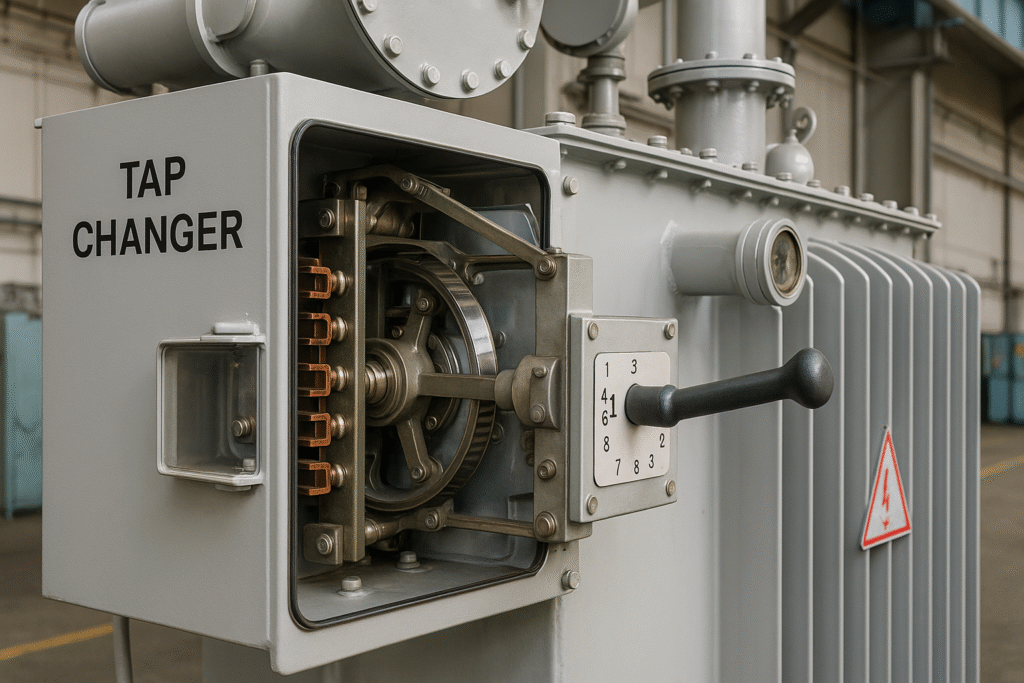Understanding the Tap Changer in Power Transformers

Introduction One of the fundamental equations governing transformer operation is: Voltage = 4.44 × Flux × Frequency × Number of Turns As you can see, the number of turns is directly proportional to the voltage. This means we can control the voltage value by adjusting the number of turns. The Importance of Voltage Regulation in Transformers In a transformer, the secondary side is connected to loads, and these load voltages are supposed to remain stable. You also know that the voltages on the primary and secondary sides follow a ratio determined by the number of turns in each winding. Under any condition, if the voltage increases on the primary winding, the voltage on the secondary winding connected to the loads will also increase. This can lead to damaging or burning out devices and equipment. Therefore, to stabilize the voltage on the secondary side, we use a device called a Tap Changer. Purpose of the Tap Changer The main goal of the tap changer is to regulate the output voltage of the power transformer and maintain voltage stability. It achieves this by switching between different turns on the high-voltage (primary) winding of the transformer. By changing the number of active turns, the turn ratio is adjusted, which in turn allows us to control the output voltage. ✅ The tap changer is a mechanical device. Types of Tap Changers Tap changers are divided into two main types: 1️⃣ Off-Load Tap Changer 2️⃣ On-Load Tap Changer Why Is the Tap Changer Placed on the High-Voltage Windings? ✅ Here are the main reasons: 1️⃣ Safety: The current on the high-voltage side is lower, so any spark during switching will be smaller and easier to manage. 2️⃣ More Turns Available: The high-voltage winding has more turns than the low-voltage side. This makes it easier to tap into the winding at different points to adjust voltage. 3️⃣ External Placement: The high-voltage windings are located on the outside, making it easier to connect the tap changer to them. Conclusion The tap changer is a crucial component for maintaining voltage stability in transformers. Whether off-load or on-load, it allows for fine-tuning the transformer’s voltage ratio to protect connected loads and ensure reliable power delivery. What is a Tap Changer in Power Transformers? A tap changer is a device used in power transformers to regulate the output voltage to the desired level. It does this by changing the connection point (“tap”) on the transformer winding, either by adding or removing winding turns. This is important for maintaining a stable voltage even when the load or input voltage changes. Types: How It Works: Why is it Important? Image Description for Educational Purposes: Edit By. DR. Engineer/ Adel Ramadan

